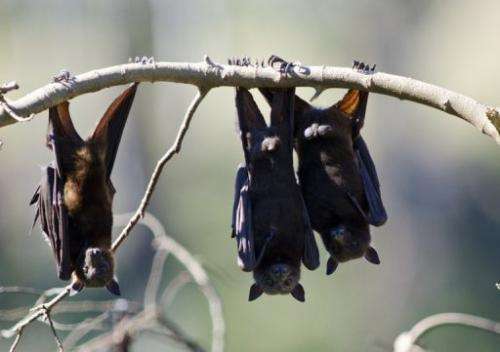Small bats squeak at higher pitch to focus better, study reports

Small bats have to emit higher-pitched squeaks than their bigger cousins for their sonar navigation systems to work equally well, scientists said Wednesday.
Bats use sonar signals to navigate in dark spaces, known as echolocation, but scientists have been at a loss to explain why the smaller species' pitch was higher than considered necessary to locate their prey.
In measuring the signals emitted by six distinct bat species, a team from the University of Southern Denmark found the answer: the size of the creatures' mouths.
Because of their relatively smaller "emitters" or mouths, smaller bats must emit their squeaks at sufficiently high frequencies to produce focused, highly-directional sound beams, explained a statement on the report published in Nature.
If they were to squeak at the same pitch as their bigger cousins with bigger mouths, the winged mammals' signals would travel a shorter distance and be scattered, said the study.
"Thus all bats adapted their calls to achieve similar acoustic fields of view," the authors wrote.
More information: DOI: 10.1038/nature11664
Journal information: Nature
(c) 2012 AFP
















